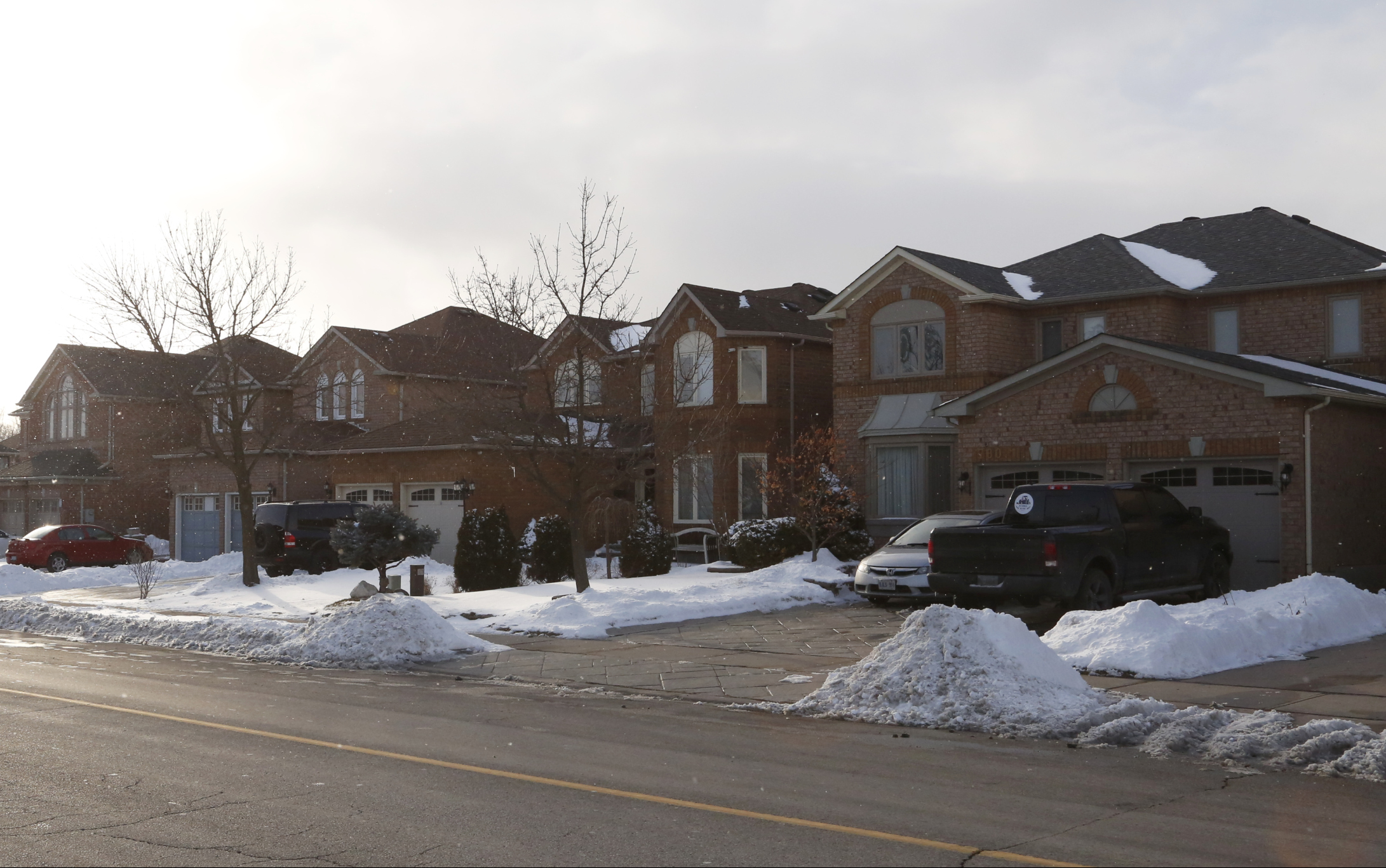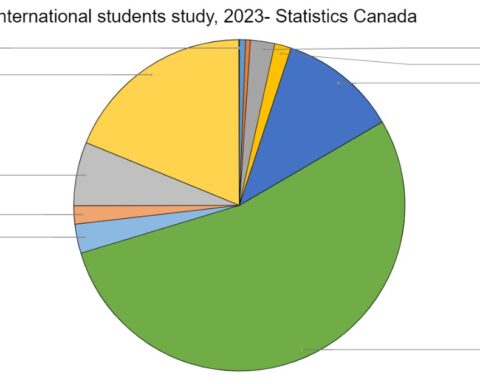Ryan Elcock is a community leader based in Brampton. He is a co-founder of BCEEN, the Brampton Community and Economic Empowerment Network, and in this capacity, he gets to talk with scores of Bramptonians, including many immigrants. As a son of an immigrant mother from Barbados, Elcock is firmly embedded in the city’s immigrant community and knows its problems inside-out.
“It feels like we don’t have a community because we are feeling isolated,” Elcock lamented to NCM. “We’re not building anything to encourage community. And how do you create community development? Affordable housing, mixed-use housing, development housing: those are the things that encourage community.”
A recurring theme in this four-part series of articles devoted to Brampton will be the city’s immigration-fuelled population growth. Between the 2011 and 2016 censuses, the Brampton population grew by 13 per cent, to nearly 600,000, and it is expected to reach 764,000 people in 2021. The municipal government predicts that by 2041, there will be roughly 900,000 people living in the city.
Such rapid growth is nothing new in Brampton. Between 1971 and 2016, the population had soared from 72,048 to 593,638, a 723 per cent increase. By 2041, it could very well be the case that there just won’t be enough housing for all the immigrants who continue to pour into the city, contributing to a homelessness crisis.
Brampton on the verge of a homelessness crisis?
“When I first moved to Brampton in the early 1990s, I never saw homeless people,” Elcock said. Seeing homeless people “panhandling” in places like near City Hall “hits different” for Elcock because “you’re seeing that the housing situation is a problem, and it is out of reach for a lot of people.”
Brampton is heavy with suburban sprawl, especially west of Hwy. 410. In total, the city had about 173,428 private dwellings in 2016, the year of the last census. Roughly 131,255 of those were single-family homes, meaning that 76 per cent of all housing in Brampton is low-density. That is the opposite of what the share ought to be considering the explosive population growth.
The vacancy rate for rentals in the city sat at 0.8 per cent in 2019, well below the 3 per cent considered to be healthy. The great numbers of people coming in, combined with a lack of high-density housing, is creating a strain that is being felt by both the immigrants and the city itself. Those who are already in Brampton are resorting to desperate measures to find a place to live.
For some it’s renting secondary suites, for others, finding cheaper housing further away. If a person’s place of work is in Brampton, Mississauga or Toronto, they might look for a place in Guelph, Oakville, or even as far afield as Kitchener. This increases the amount of time stuck in traffic, gas costs and general stress.
The developers “are not building anything where young people that would want to stay here can live and create a life to enjoy themselves. They’re building to keep those kinds of people out,” Elcock said. “There’s nothing for the young people to do. So what are they going to do? Leave.”
Brampton has more residents per household than any other city in the Greater Toronto Area (GTA). It is the only city in the GTA where households with five or more people outnumber the other categories. Multiple generations of one family cramming into one house meant for a single family is not unheard of.
This overburdens city services and resources like garbage collection or water and wastewater infrastructure, which are allocated on a single-family basis. While only one member of an overcrowded household pays property taxes, the resources are being stretched to meet everyone’s needs.
Brampton’s overcrowded secondary suites
It is a well-known practice by the so-called predatory landlords, especially near Sheridan College’s Davis Campus, to overpopulate their properties with students. The Pointer spoke to two international students living in such dwellings. One complained of being forced to live with six other people, two to a room.
This overcrowding is not uncommon, but It took the COVID-19 pandemic to reveal the extent of the problem. The virus spreads like wildfire through the overcrowded secondary suites. The city’s status as a COVID-19 grey zone (lockdown) did not occur in a vacuum.
Secondary suites, most of which are basement apartments, have proliferated and are an annoyance for both legacy residents (due to noise and garbage) and the municipal government. On their own, and when done right, there is nothing wrong with secondary suites. But combining all the problems associated with high occupancy, lack of safety, and estimates that there could be as many as 50,000 illegal suites in the city, the government has a crisis on its hands.
“A lot of these suites are illegal. Which means they don’t conform to either the building code or the fire code,” City Councillor for Brampton Wards 3 and 4 Jeff Bowman told NCM.
Bowman has taken it upon himself to raise the issue of illegal secondary suites on Brampton city council. After a fire in an alleged illegal suite in his ward claimed the life of a man in April 2019, Bowman wrote a letter to Ontario Premier Doug Ford, requesting additional powers for city enforcement officers to enter and inspect suspected properties. A less than adequate response came in June from the province’s Minister of Municipal Affairs and Housing, Steve Clark.
“Current provisions allow municipal inspectors, with warrant or with the occupant’s consent, to enter and inspect units that are suspected to be unsafe,” Clark’s response read. Bowman felt that the letter did not address the issue at hand, leaving him frustrated at the time.
“I consider the letter from my standpoint a little condescending. We’ve asked him to work on a problem, a big problem the city is having. His response is basically ‘get a warrant.’ Does he expect us to go out and get 25,000 [warrants] to enter the illegal apartments we have in Brampton?” Bowman said in 2019.
No affordable housing options
“I wish that the region and the builders would consider building affordable homes, and that is the real issue,” Bowman said. “People are saying there is not a lot of affordable housing anymore. Whether it’s newcomers or whether it’s students that are coming here, there is nowhere for them to go.”
The average selling price of a detached home in Brampton is $855,000, and the median rent for an apartment in Brampton is $1,650. Brampton, an immigrant city in every sense, cannot adequately and safely house newcomers.
Advocates have long called for intensification: the process of increasing and densifying the amount of development per hectare. Darryl Wolk, formerly a strategist for Fair Share for Peel Task Force (FSFPTF) and now its manager of policy development and public affairs, used to advocate strongly for growth-related development, which included housing.
“Intensification creates more affordable options, it allows more people to live within a congested area, and it allows you to provide services for more people … particularly for those who don’t have a car,” he said. “When you realize that Toronto is unaffordable, you go to the next layer which is Mississauga [or Brampton]. When that becomes unaffordable, you start moving further and further away from the city.”
Intensification and densification are ways to achieve compact design, one of the principles of Smart Growth. It is possible to have a more compact city, one with a much smaller footprint in a geographical area, by increasing the population density in a given area as well as the amenities these people will rely on.
Smart Growth is listed as one of the aims in Brampton’s Strategic Plan. Compact development provides more housing options in a smaller area, rather than fewer options over a sprawled area. It creates land uses that address dwelling stock shortfalls while meeting the needs of a growing population. Could it solve the city’s problems?
Mansoor Tanweer is New Canadian Media’s Local Journalism Initiative reporter on immigration policy. An immigrant himself, he has covered municipal affairs and the Brampton City Council in addition to issues relating to newcomers over several years.





